Pork tenderloin makes a superb dinner for weekends and weeknights alike. It can be very simple or as extravagant as you like. However, if the pork is undercooked, it may not be safe to eat. Conversely, if the pork is overcooked, it will be dry and tough. Finding the right balance of cooking time and oven temperature is the key to achieving the perfect pork tenderloin.
Pork tenderloin should be cooked in the oven at 350°F for approximately 27-30 minutes, or until it reaches an internal temperature of 145°F. The exact cooking time will depend on the size and thickness of the pork tenderloin, as well as the type of oven being used.
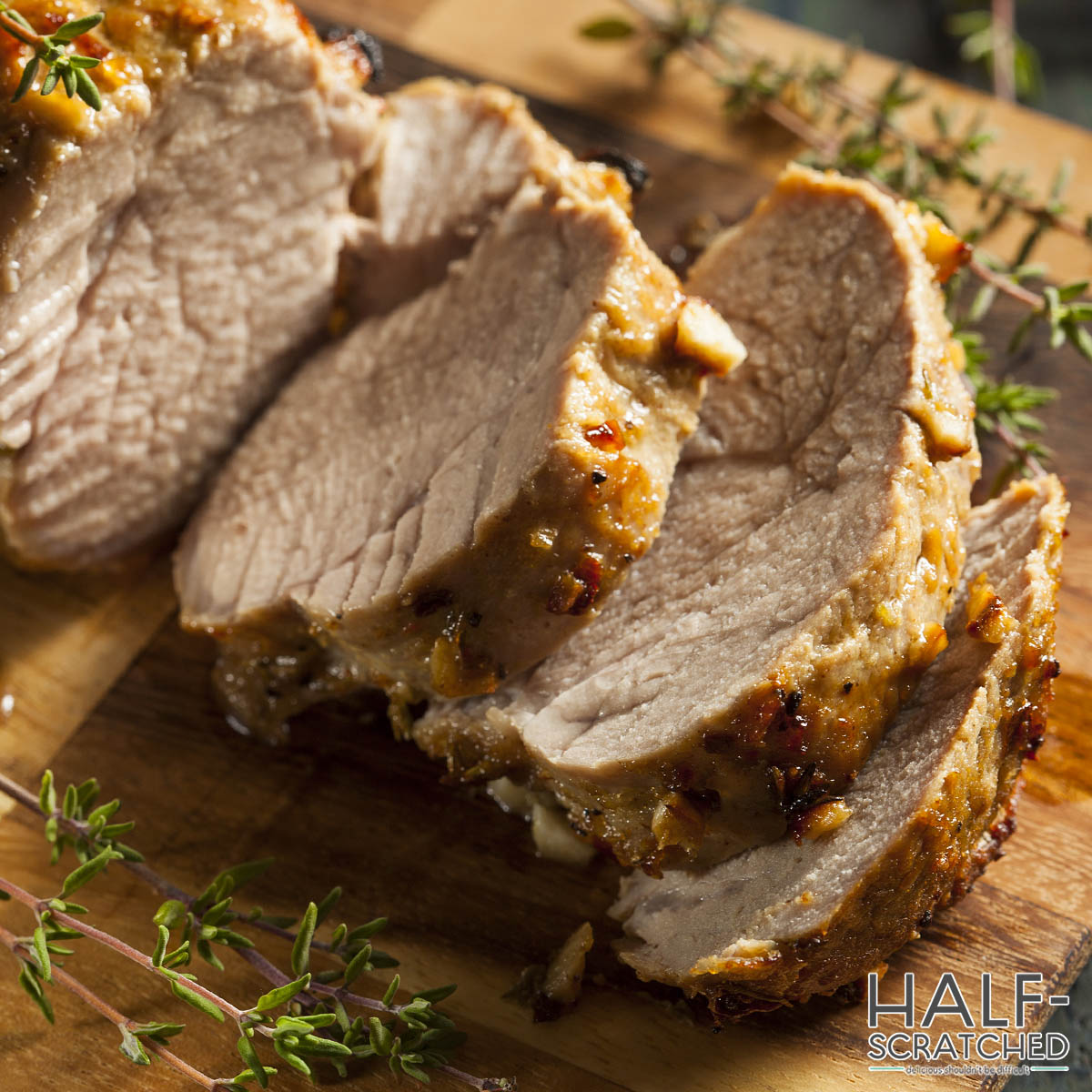
As a general rule, a pork tenderloin weighing 1-1.5 pounds will take about 25-30 minutes to cook in the oven at 350 degrees. If the tenderloin is covered with a layer of foil or wrapped in bacon, it may take an additional 5-10 minutes to cook.
A 2-pound pork loin in the oven at 350 degrees will typically take between 40 minutes and 1 hour, depending on the specific oven and the desired level of doneness.
What Temperature Is Pork Tenderloin Done At?
It is important to cook pork tenderloin to the proper internal temperature to ensure that it is safe to eat. Pork can be especially sketchy to eat if it's undercooked. The USDA recommended internal temperature for cooked pork is 145 degrees Fahrenheit, as measured with a meat thermometer.
You can gauge the temperature of the pork tenderloin by inserting the thermometer into the thickest part of the meat.
How to Tell if Pork Tenderloin Is Done Cooking Without a Thermometer?
It can be difficult to know when a pork tenderloin is done cooking at 350 without a meat thermometer, as the only sure way to know that the pork is fully cooked and safe to eat is to check the internal temperature.
However, there are a few visual and tactile cues that can help you gauge the doneness of a pork tenderloin without a thermometer:
- Visual cues: As the pork cooks, it will change color from pink to off-white. This can be a rough indicator of doneness, but it is not a reliable method on its own, as the color of the pork can be affected by other factors such as the marinade or the cooking method.
- Touch test: Another way to tell if pork tenderloin is done cooking is to use the "touch test." To do this, gently press the pork with your finger. If the pork feels firm and springy to the touch, it is most likely done. If it feels much too soft and tender, it may need more time in your 350-degree oven.
Keep in mind that these methods are not foolproof and can be misleading, especially if you are not experienced in cooking pork. The only way to ensure that the pork is fully cooked and safe to eat is to use a meat thermometer to check the internal temperature. The internal temperature of a pork tenderloin should be at least 145°F (63°C) when measured with a meat thermometer.
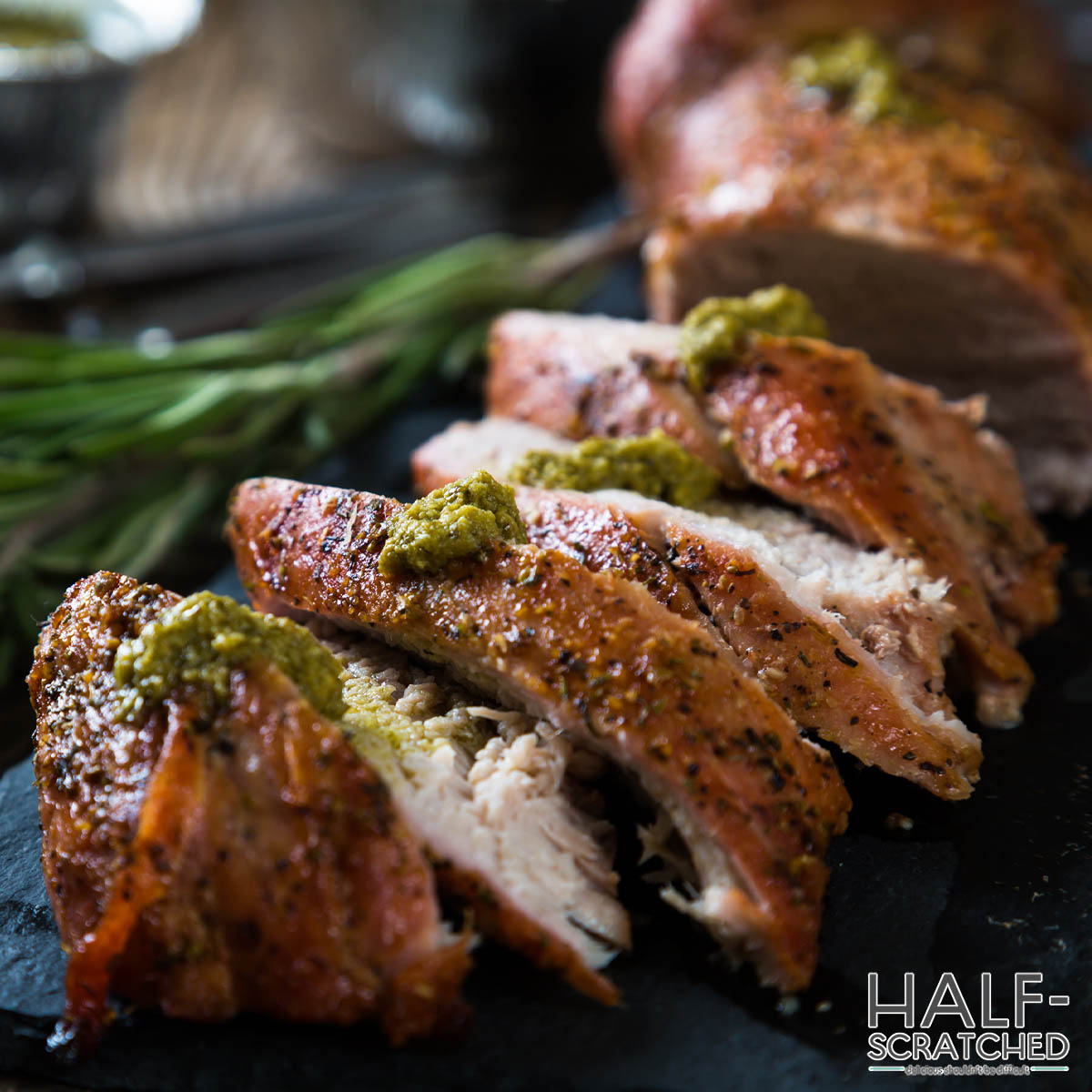
Can You Overcook Pork Tenderloin
Yes, it is possible to overcook pork tenderloin - and you certainly don't want to. Pork tenderloin is a lean cut of meat, so it can become dry and tough if it is overcooked. This can happen especially easily if the tenderloin is cooked at a high temperature for a long period of time or if it is cooked using a dry heat method such as grilling or roasting.
350 F is one of the most ideal temperatures to cook pork in the oven at, as it will not overcook your pork as fast, but you won't be laying around and waiting for dinner for hours on end!
If you do overcook the pork, there are a few things you can try to help make it more tender:
- Slice the pork very thinly: Thin slices of overcooked pork will be easier to chew and swallow than thick slices.
- Moisten the pork with a sauce or broth: Adding moisture to the pork can help to counterbalance its dryness.
- Shred the pork: Shredding the pork and using it in a recipe that includes a sauce or broth can help to keep it moist.
- Grind the pork: If the pork is too dry to slice or shred, you can try grinding it and using it in a recipe that includes a sauce or broth.
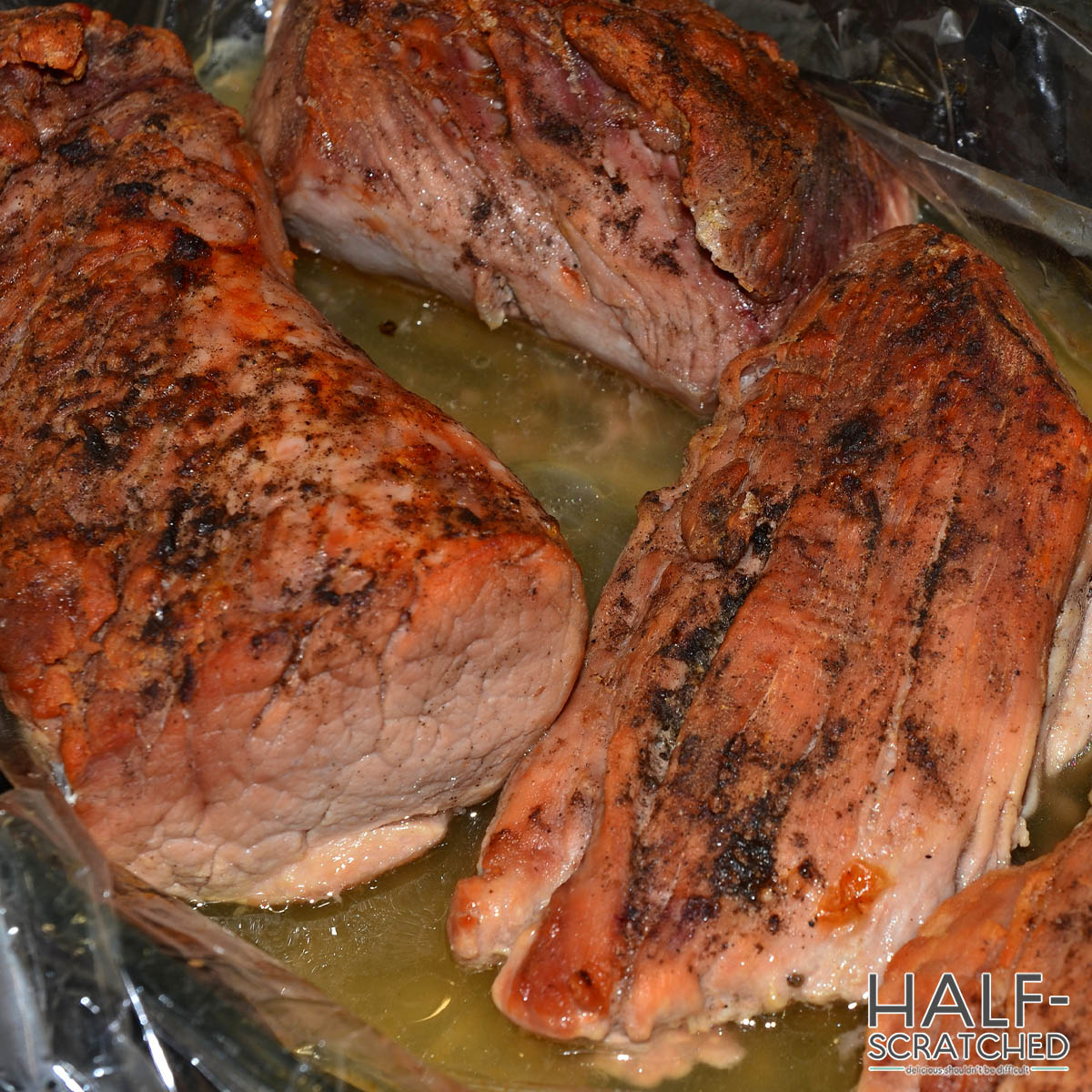
Can You Cook Pork Tenderloin at 350 Without Thawing It
It is generally not recommended to cook pork tenderloin at 350 degrees without thawing it first. When meat is frozen, the water inside it forms ice crystals, which can cause the meat to become tough and dry when cooked.
Additionally, cooking frozen meat can take longer, as the meat needs to thaw and come up to temperature before it is fully cooked. This can result in uneven cooking, with the exterior of the meat being overcooked while the interior is undercooked.
For these reasons, it is generally best to thaw pork tenderloin before cooking it. To thaw pork tenderloin, you can place it in the refrigerator for several hours or even a full day, depending on the size of the pork. You can also thaw it more quickly by placing it in a bowl of cold water and changing the water every 30 minutes to ensure that it stays cold.
Once the pork tenderloin is thawed, you can cook it at 350 degrees using your preferred method, such as roasting in the oven, grilling, or cooking in a slow cooker. Be sure to use a meat thermometer to ensure that the pork is cooked to the proper internal temperature of 145 degrees Fahrenheit to ensure that it is safe to eat.
My Top Tips for Cooking Pork Tenderloin
Here are a few ways that you can deliver perfect pork tenderloin every time, no matter how you're dressing it up!
Remove the Silverskin
To prepare pork tenderloin for cooking, you'll need to cut off the silverskin - a thin layer of sinew on the exterior of the meat. The silverskin does not become tender when cooked, so it's important to slice it off before seasoning and roasting the pork tenderloin.
To remove the silverskin from a pork tenderloin, use a sharp knife to carefully trace the blade beneath the sinew, taking care to remove as little meat as possible. This will help ensure that the pork is ready for cooking and will result in a tender and flavorful finished dish.
Brine the Tenderloin
Brining the pork tenderloin is a way to supercharge the flavor and juiciness of the meat before you bake it at 350. To make a brine, mix four tablespoons of kosher salt into four cups of water. Make sure the pork is fully submerged in the brine solution - you can use a Ziplock bag or large covered bowl for this.
Let the pork rest and soak in the brine in the fridge for 30 minutes to two hours. When the time is up, discard the brine solution. Brining the pork tenderloin will give it a more flavorful and juicy finished product.
Season Your Pork
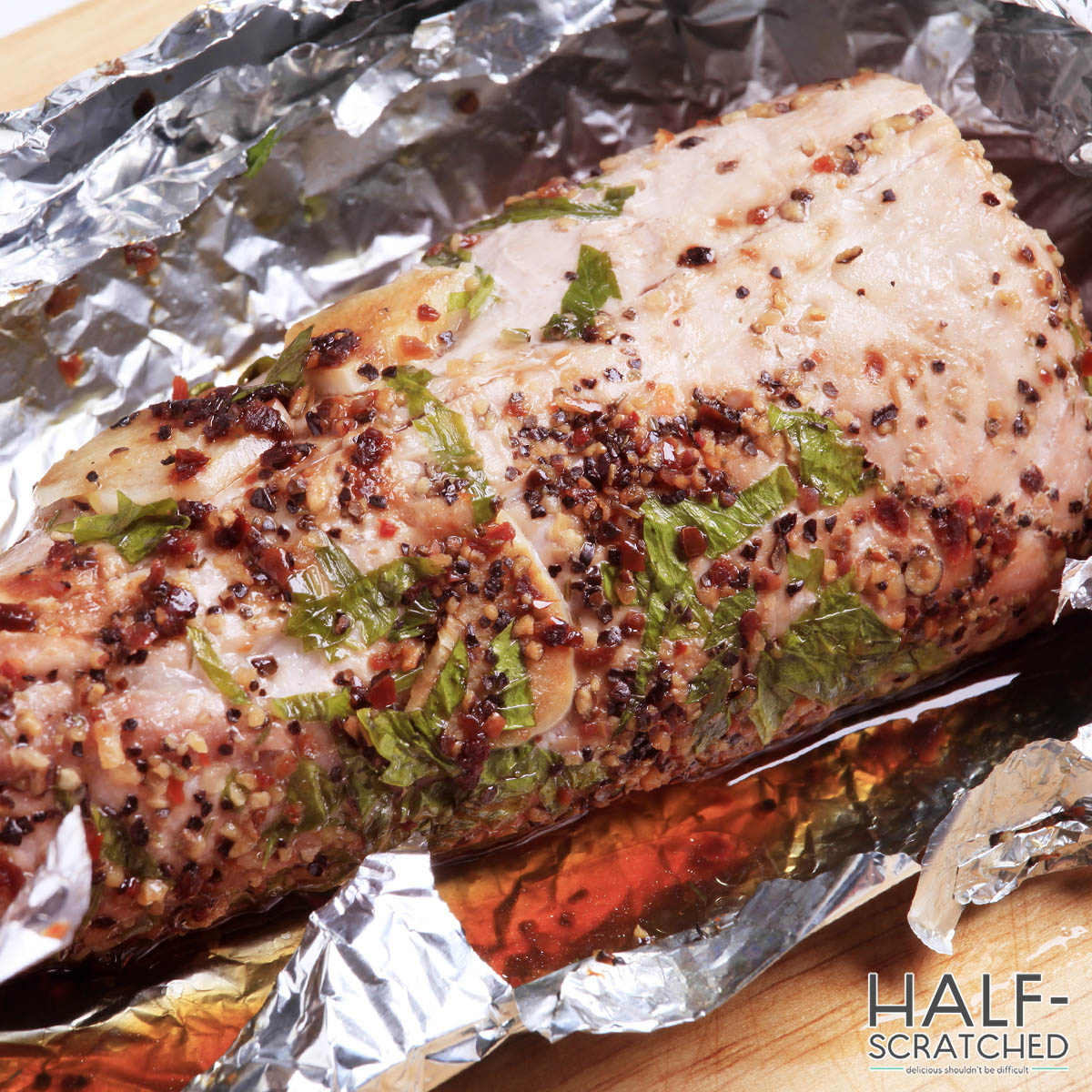
Seasoning pork tenderloin is an important step in creating a flavorful and delicious finished dish. There are many different ways to (literally) spice up your pork tenderloin, including using a combination of herbs, spices, to say nothing of the classic salt and pepper. Some popular herbs and spices to use with pork tenderloin include garlic, rosemary, thyme, paprika, and cumin.
You can also use a dry rub or a marinade to add additional flavor to the pork. It's important to remember that pork tenderloin is a lean cut of meat, so be careful not to over-season it or the flavors may become overwhelming. Experiment with different seasoning combinations to find the perfect blend for your taste.
Reheating Pork Tenderloin
When you're ready for some delicious leftovers in a flash, pork tenderloin is perfect as it tends to reheat pretty well. There are several ways to reheat pork tenderloin, depending on your preference and the equipment you have available. Here are a few options:
- Oven: Preheat your oven to 350°F (175°C). Place the pork tenderloin in a baking dish and cover it with foil. Bake the pork until it is heated through, about 10-15 minutes.
- Stovetop: Heat a little oil in a large skillet over medium heat. Add the pork tenderloin and cook it until it is heated through, about 5-7 minutes per side.
- Microwave: Place the pork tenderloin in a microwave-safe dish and cover it with a damp paper towel. Heat the pork on high power in 30-second intervals until it is heated through, about 1-2 minutes.
It's a smart idea to slice the pork thinly into single serving sizes before reheating it, as this will help it to heat more evenly and quickly. If you are reheating a large piece of pork tenderloin, you may need to increase the cooking time accordingly.
My Simple Yet Delicious Pork Tenderloin Recipe
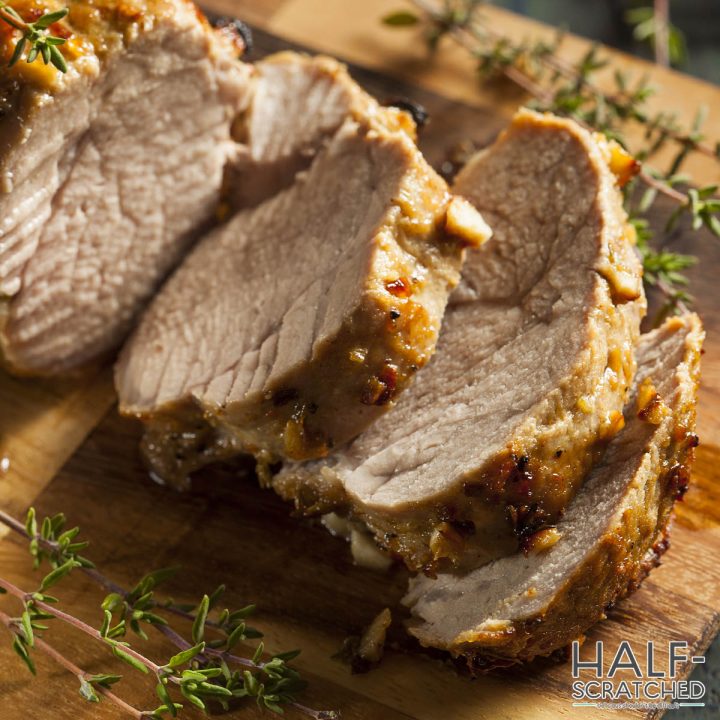
How Long to Cook Pork Tenderloin in the Oven at 350 F
There are a lot of ways that you can make a pork tenderloin the star of your dinner table with the inclusion of bacon, marinades, puff pastry, or any number of dressings. However, if it’s your first time whipping one up, or if you’re just looking for a low-effort dinner, here is a very basic recipe for cooking pork tenderloin in the oven at 350 F.
Ingredients
- 1 pork tenderloin (about 1 pound)
- 1 tablespoon olive oil
- Salt and pepper, to taste
- Your choice of herbs and spices (such as rosemary, thyme, garlic, etc.)
Instructions
- Preheat your oven to 350°F (175°C).
- Pat the pork tenderloin dry with paper towels and season it generously with salt, pepper, and your selection of herbs and spices.
- Heat the olive oil in a large oven-safe skillet over medium-high heat. When the oil is hot, add the pork tenderloin to the skillet and sear it on all sides until it is browned, about 2-3 minutes per side.
- Transfer the skillet to the preheated oven and roast the pork until it reaches an internal temperature of 145°F (63°C), about 20-30 minutes. Use a meat thermometer to check the internal temperature. A baking dish is fine if you don't have an oven-safe skillet.
- Take out the skillet and transfer the pork to a cutting board. Let it rest for 5-10 minutes before slicing. This will allow the juices to redistribute and make the pork easier to slice.
- Serve the pork sliced with vegetables, rice, or anything else you love on the side!
Nutrition Information:
Yield: 2 Serving Size: 1Amount Per Serving:Calories: 404Total Fat: 16gSaturated Fat: 4gTrans Fat: 0gUnsaturated Fat: 11gCholesterol: 166mgSodium: 280mgCarbohydrates: 2gFiber: 1gSugar: 0gProtein: 60g


Leave a Reply